Curious to know how to scale your Facebook Ads over $1,000/day? Get our experts' recommendations for free! All our clients went through this step!
5 Steps to Facebook Ads laser Targeting
Facebook targeting is a crucial part of the acquisition process and is one of the elements that should be analyzed/optimized when a campaign doesn't perform as well as it should. Your targeting must be aligned with your advertising efforts and sales page.
When you first started advertising through Facebook, targeting probably raised a lot of questions:
- How should I go about targeting?
- Which audience should I start with?
- Should I start off by having many audiences or not?
Each case being unique, I'll refrain from answering all of these questions in one article. However, I will provide you with 5 steps that will help you build a pool of audiences and, eventually, find the one that will bring you the best results.
Let's start by outlining the framework of this exercise:
- We will only be discussing cold audiences on Facebook (you don't have an existing community).
- We will not use lookalike audiences (no existing data).
You’ve discovered a unique product that you want to sell and you're starting from scratch on Facebook.
To identify an audience, you need to find what content it consumes in your industry:- Books
- Influencers/Celebrities
- Movies, podcasts
- Events
- Magazines, newspapers
- Facebook pages related to your business
These are, roughly speaking, the 6 pillars of effective cold targeting. However, you will quickly understand that not all of these sources of content will be useful when Facebook targeting, as they must be important enough in order for Facebook to suggest them as “interests” to your audience.
In this article, we will look at how to find the right content, how to collect it, and how to then select audiences.
Let’s use the French Tennis market as an example.
Today, I am launching a business that offers tennis players a new must-have accessory.
Let's get started.
1 - Facebook targeting: Amazon
Using Amazon for your Facebook targeting may seem strange, but it's a goldmine.
On Amazon, you will easily find a wide selection of products related to your industry, categorized by price, product type... and by brand!
Simply type "Tennis" in the search bar, select a category in the drop-down menu on the sidebar and have a look at the brands.
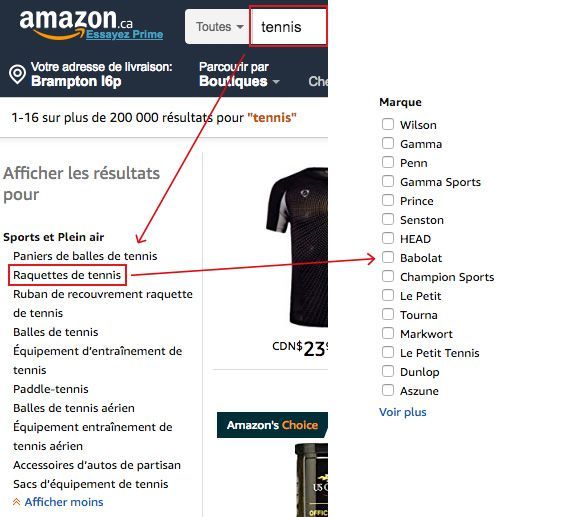
With this first list, you have the most famous brands in the industry, but nothing prevents you from clicking on "See More" to discover more and expand your knowledge.
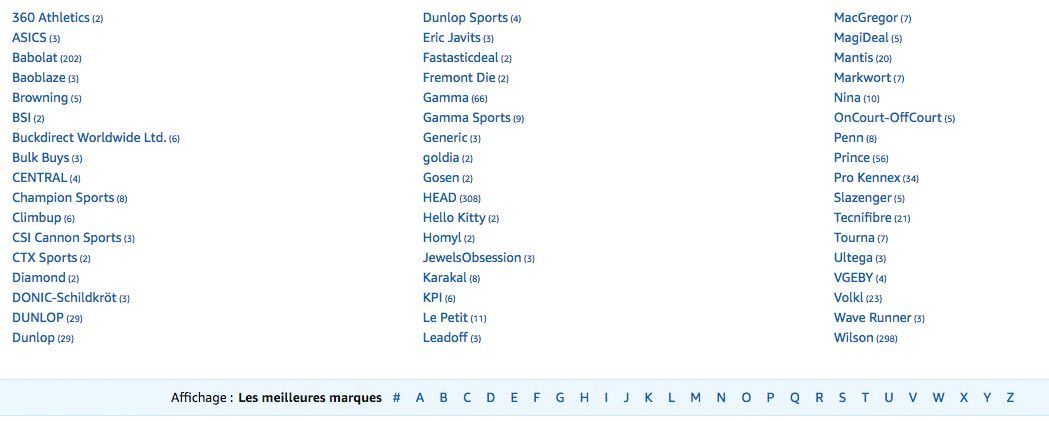
Note however that not all brands can or should be used on Facebook. ASICS, for example, is a multi-faceted sports brand that sells clothing and equipment for a wide variety of sports. Make sure that your brand is specifically focused on tennis otherwise, your audience will be diluted.
Once you have a selection of brands, it is a good idea to look them up on Google in order to find e-commerce websites that could help you discover other brands that may not be displayed on Amazon.
Now, follow the same steps but for books.

Start searching for books that your (French-speaking) audience might have read.
You will notice a tool below each product sheet that will prove very useful: the recommendation bar.
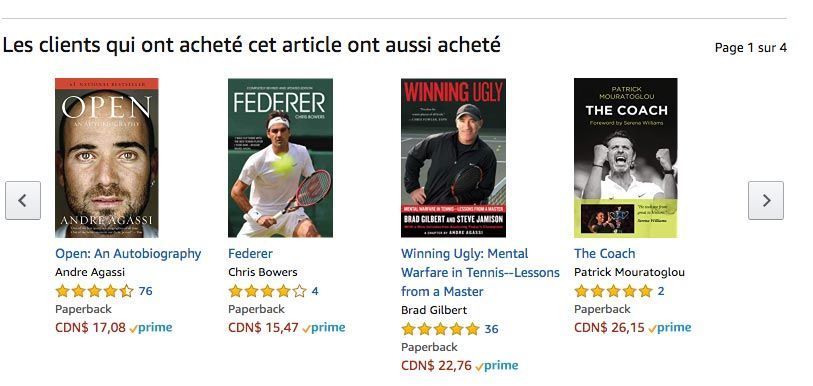
This recommendation bar is a real goldmine of information, as Amazon has essentially done the research for you. Because it processes the same searches focusing on the same topics of interest over and over again, the platform can quickly go through popular content and give you recommendations.
Once you have a good list, go to the next step.
2 - Facebook targeting: Google
Although Amazon offers a wide range of products, it's rather useless when it comes to looking for information about the most popular topics, people, or products in their respective category; what we will call the centers of attention.
What’s a center of attention?
Let me explain. It’s pretty simple.
It's a personality, an event, a type of media, or any other element that regularly generates strong attention.
This step is even easier. All I had to do is type "Famous Tennis" for Google to do the work.
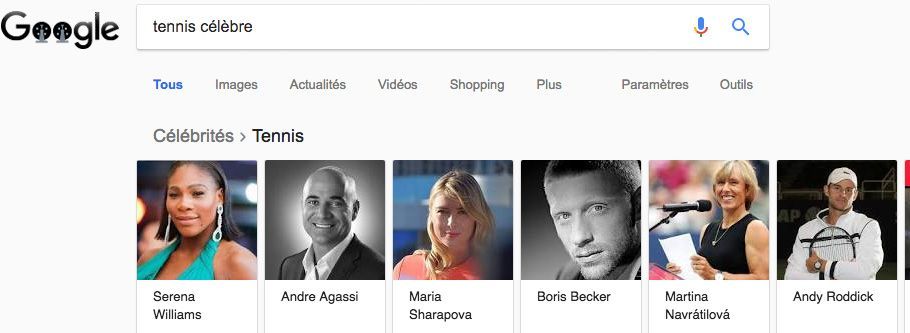
Again, use the recommendations to your advantage and simply sort through your selection.
Are all of the athletes in your results still in the world rankings?
I can check by looking up the international organization that manages these rankings.
I'll do this for women and men and then select the top 10 by gender. Although some players may seem less familiar to me, they won't be to hardcore tennis fans!
The process is the same for international events that may grab our target audience’s attention.
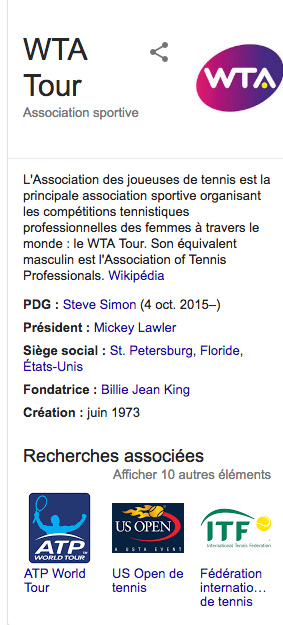

Associations, organizations, major tennis tournaments: consider them all!
After that, follow the same process for media and other websites that could reach and bring your audience together on a daily basis.
3 - Facebook targeting: Audience Statistics
We’re now on Facebook!
More specifically, on the Audience Statistics tab.
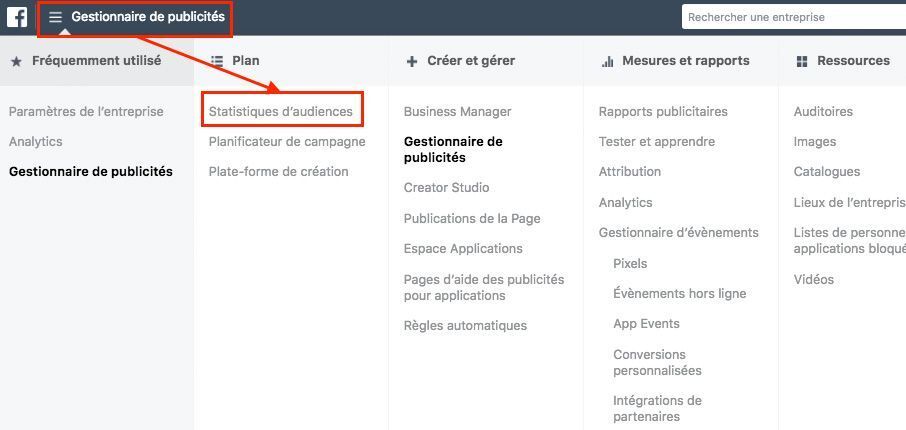
One thing that Google and Amazon won't give you is the pages that your audience follows. Audience statistics will have to make up for that!
All of the data and results that you have previously obtained will be useful in this step.
First, select the country relevant to you (default is the United States) and input some of the interests from your list. Athletes, events, brands: a little bit of everything.
When you have enough volume, Facebook will suggest demographic data: this is your first major piece of information.
But the most important thing here is the “Page Likes” tab (see below).
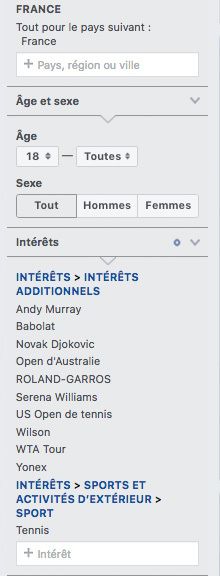
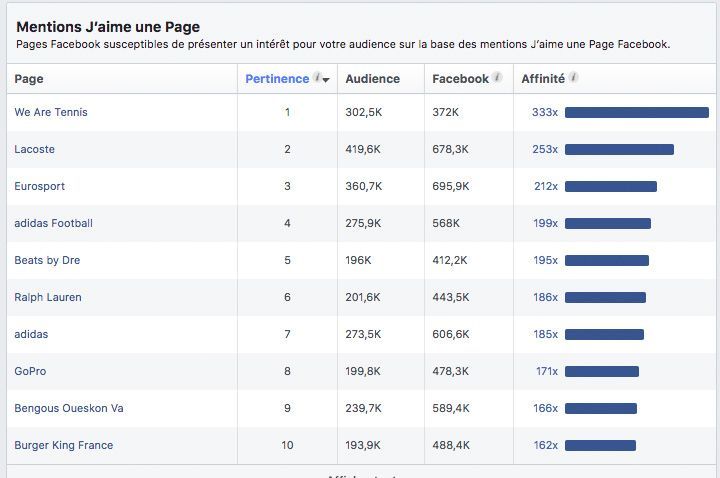
I’ve made my first discovery! We Are Tennis, a page that I had no knowledge of prior to starting my research. Moreover, despite being an established brand, Lacoste went completely unnoticed throughout my research, and the reason is simple: Lacoste does not sell tennis rackets or accessories specifically designed for this sport. It is, however, a historical partner of the sport in France. So, that’s a lead to follow.
The remaining interests are irrelevant, so I won't add them to my list.
4 - Facebook targeting: Set Up & Decisions
I now have the following audiences:
- Eurosport / Tennis - FR - 610k → Eurosp
- Tennis Players V1 - FR – 1.6m → Jr V1
- Tennis Players V2 - FR - 530k → Jr V2
- Tennis Brands V1 - FR - 260k → Mrq V1
- Tennis Brands V2 - FR - 110k → Mrq V2
- Organization / Event V1 - FR – 1.4m → OE V1
- Organization / Event V2 - FR - 380k → OE V2
- We Are Tennis - FR - 290k → WA
Slight clarification: V1s include all criteria of interest in the same targeting, whereas V2s are further refined. Here is an example for Tennis Players.
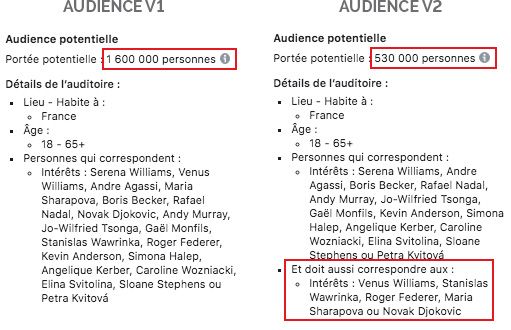
Of course, you don't have an unlimited budget, so you will have to make some decisions. I, therefore, recommend that you look at the overlap between these audiences.
In order to do that, I created a very simple matrix.
Red = + 40% Overlap (unusable together)
Green = -40% Overlap (usable together)
The matrix reads from left to right: X is contained at X% in Y audience.
Results may vary depending on how you create your audiences, but here are mine.
Example: more than 40% of Eurosport (Eurosp) is contained in Tennis Players V1 (Jr V1).
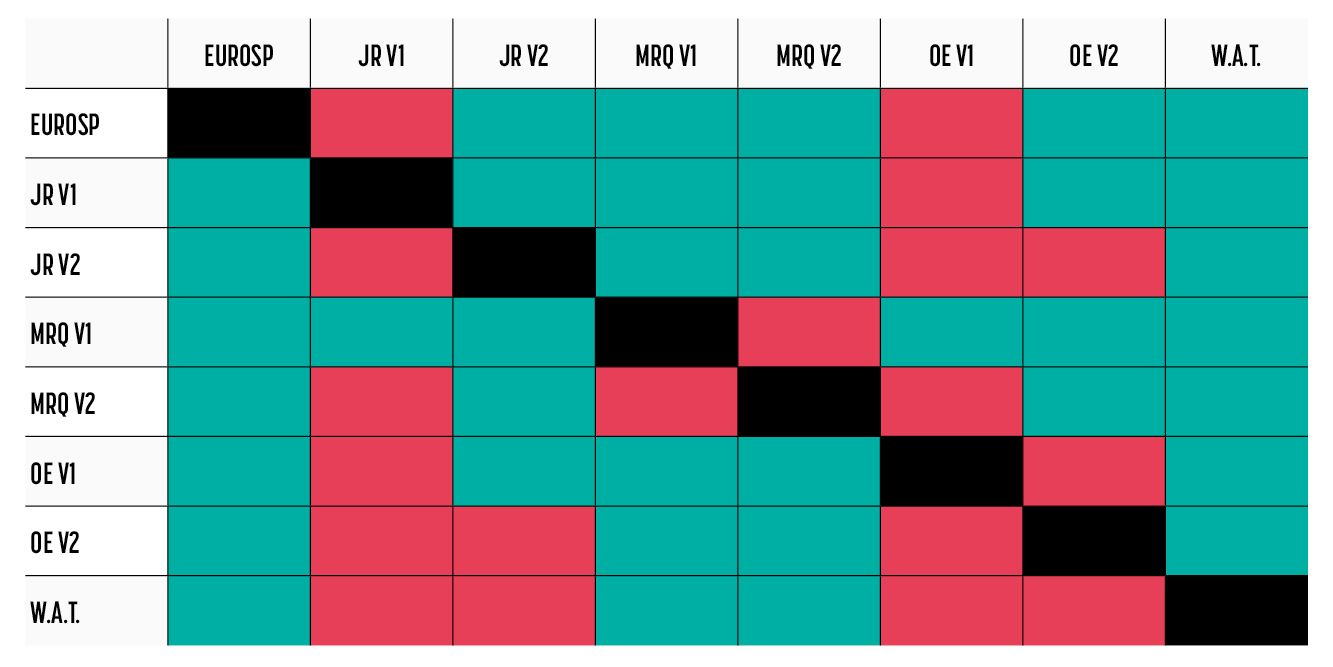
If I had to make a choice, I would pick:
- Tennis Players V2: A specialized audience that includes Tennis V1, Organization V1 / V2
- Tennis Brands V2: Another specialized audience, but without a big overlap with Tennis Players V2
We Are Tennis: Despite an overlap with Brands V2, it's an audience that's 100% Tennis. During its integration, I will exclude interests to reduce the overlap.
So, 3 audiences to help us find a winning audience faster (or to run more in-depth tests).
If you do not have the required budget and want to get as close as possible to your ideal audience, all you have to do is mix all of the audiences and ensure that you select some elements when you get to the stage of refining your audience.
Select more limited criteria in the first targeting box than in the second. Your goal is to reach a specialized audience; broad criteria will dilute your audience.
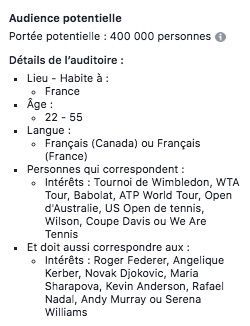
Here are my results.
And here is the overlap of audiences that I get with the previous 3.
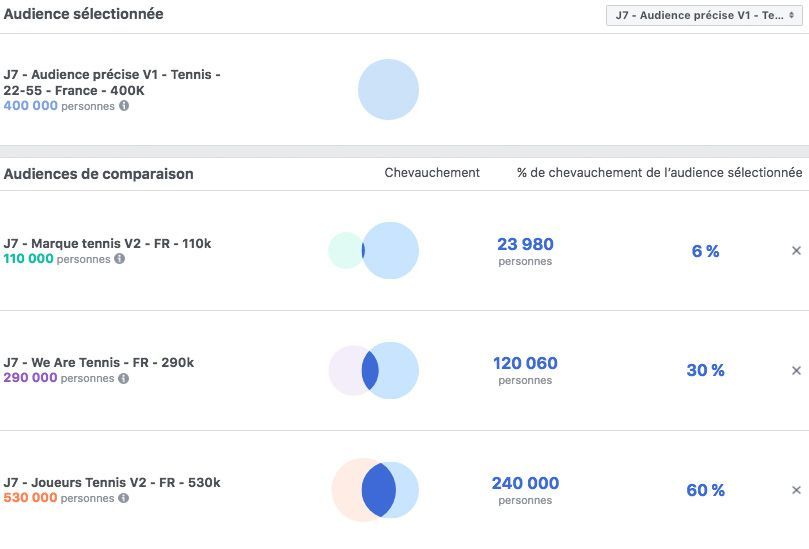
Although famous athletes are part of the refinement criteria, they represent the bulk of the volume (60% overlap with Tennis Players V2).
If you want, you can test multiple combinations of criteria until you reach an even overlap between all audiences. That way, you're sure to reach initial audiences equally.
Remember one thing:
If you use this type of audience (with lots of criteria), it will be more difficult to differentiate between the criteria that brings you results and the one that increases your costs.
That is why I advise against this kind of practice.
5 - How to further refine your Audiences
Although we're in the 5th (and last) section of this article, the 3 following elements are to be used throughout your research (before selecting your final audiences).
However, you may not have access to these 3 resources from the start.
Moreover, in my initial example, we were starting from scratch.
You should, therefore, work on a case by case basis.
# 1 - Google Analytics
Your Google Analytics account is a valuable tool for your demographics-based targeting.
Without being an expert in Google Analytics, here are some tabs that you should look at if you have enough data.
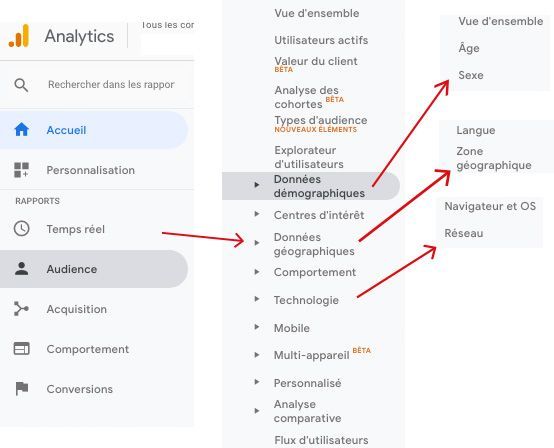
B – Acquisition
Here, you will discover your website’s traffic sources. This will give you a better idea of how people find your website.
C – Behaviour
This is interesting if you have a blog with many articles.
You will be able to find out, for example, which one generates the most clicks, and therefore which one is of interest to your audience (according to age, gender, location).
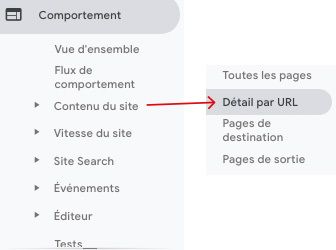
# 2 - Competitors' Facebook Ads
If you know that your business has direct competitors, it’s always a good idea to have a look at their ads.
Here is a quick example using Babolat’s page.
Here, I can see that Babolat is advertising in France (my initial market) and that all of its active ads promote a racket used by Rafael Nadal (one of the top tennis players right now).
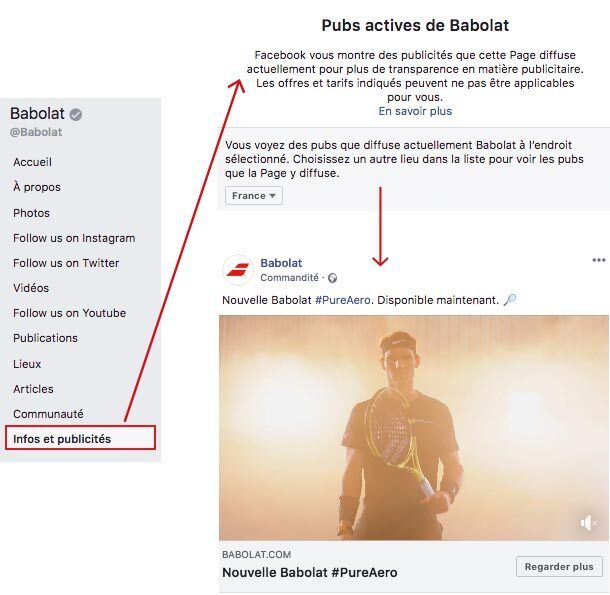
# 3 - Your existing customers (or others!)
It's not easy when starting from scratch, but if you have the opportunity to interact with customers (both yours as well as others’) do so.
By doing so, you will obtain a standard demographic, geographical, and psychological profile, in addition to many details that you wouldn’t be able to find on the Internet.
Conclusion
Although following this process might seem tedious (and it is!), it is necessary before launching your Facebook advertising campaigns.
It’s critical because it gives you strong targeting leads that you can test right away. You will also obtain a great deal of information and data about your future customers by having a look at the content that they consume. Overall, it's a good way to "triangulate" the codes, dreams, aspirations, frustrations, and expectations of your market.
Of course, the work doesn't stop there. You can also:
- Browse forums and interact directly with your customers.
- Watch YouTube videos from influencers or specialized media.
Analyze Google search trends for information and data at the regional level.
In this industry, the only limit is your time and imagination!

